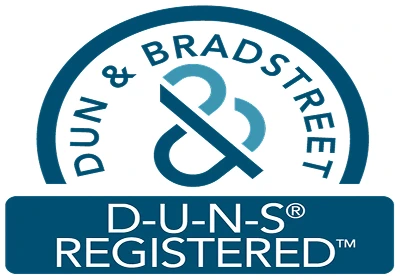
US.: +1-252-477-1362
UK.: +44-203-957-8553
AUS.: +61-8-7924-7805
INDIA: +91-848-285-0837

Published Date : 30 Dec, 2025
Global super absorbent polymers (SAP) market is expected to witness significant growth due to the rising demand from various end-use industries including baby diapers, adult incontinence products, feminine hygiene products, and others. SAP plays a vital role in absorb... View more
Published Date : 30 Dec, 2025
The global polypropylene market is estimated to be valued at USD 125.62 Bn in 2025 and is expected to reach USD 173.54 Bn by 2032, exhibiting a compound annual growth rate (CAGR) of 4.7% from 2025 to 2032. Polypropyle... View more
Published Date : 30 Dec, 2025
The Global Nylon 6 Market is estimated to be valued at USD 17.34 Bn in 2025 and is expected to reach USD 26.95 Bn by 2032, reflecting a compound annual growth rate (CAGR) of 6.5% from 2025 to 2032. Gl... View more
Published Date : 30 Dec, 2025
The polylactic acid market is estimated to be valued at USD 998.2 Mn in 2025, exhibiting a compound annual growth rate (CAGR) of 18.4% from 2025 to 2032. Polylactic acid (PLA) is a biodegradable and bio-based thermoplastic aliphatic p... View more
Published Date : 30 Dec, 2025
Bio-based Construction Polymers Market Size and Forecast – 2025 – 2032 The Global Bio-based Construction Polymers Market size is estimated to be valued at USD 4.2 billion in 2025 and is expected to reach USD 8.5 billion by 2032, exhibiting a compound annual growth rate (CAGR) of 10.2% from 2025... View more
Published Date : 30 Dec, 2025
What is Nitrile Butadiene Rubber? Also known as Buna-N, nitrile butadiene rubber, or simply NBR, nitrile rubber is made from the polymer acrylonitrile and the chemical compound butadiene. Because it's a synthetic rubber, it's resistant to weather, ozone, and other ele... View more
Published Date : 30 Dec, 2025
Ultraviolet (UV) Curable Resins Market Size and Forecast – 2025 – 2032 The Global Ultraviolet (UV) Curable Resins Market size is estimated to be valued at USD 5.68 billion in 2025 and is expected to reach USD 10.47 billion by 2032, exhibiting a compound annual growth rate (CAGR) of 9.7%... View more
Published Date : 30 Dec, 2025
The Global Plastic Conduit Market is estimated to be valued at USD 18.45 Bn in 2025 and is expected to reach USD 27.02 Bn by 2032, exhibiting a compound annual growth rate (CAGR) of 5.6% from 2025 to 2032. The global ... View more
Published Date : 30 Dec, 2025
Epoxy curing agents have a wide range of applications in industrial coatings, civil engineering & construction, automotive, and metal-to-metal adhesives, composites, and electronic potting, among others. Various types of curing agents such as aliphatic, cycloaliph... View more
Published Date : 30 Dec, 2025
Polysilicon Market Size and Forecast – 2025 – 2032 The Global Polysilicon Market size is estimated to be valued at USD 12.9 billion in 2025 and is expected to reach USD 23.1 billion by 2032, exhibiting a compound annual growth rate (CAGR) of 8.2% from 2025 to 2032. Overview Polysilico... View more
Published Date : 30 Dec, 2025
The global automotive plastics market is estimated to be valued at USD 35,264.1 Mn in 2025 and is expected to reach USD 57,004.2 Mn by 2032, exhibiting a compound annual growth rate (CAGR) of 7.1% fro... View more
Published Date : 30 Dec, 2025
Liquid crystal polymers (LCPs) are a unique class of thermoplastics that exhibit properties between traditional plastics and metals. They combine the molding capabilities of plastics with the strength and rigidity of metals. LCPs demonstrate high strength, rigidity, h... View more
Published Date : 30 Dec, 2025
The waterproofing membranes market is estimated to be valued at USD 28.78 Bn in 2025, exhibiting a compound annual growth rate (CAGR) of 8.4% from 2025 to 2032. Waterproofing membranes are essential construction materials used to prevent water penetration and seepage ... View more
Published Date : 30 Dec, 2025
Vinyl acetate monomer is an organic compound that is produced by the reaction of ethylene and acetic acid with oxygen by using palladium catalyst. It is one of the key chemical compounds use to produce various industrial and consumers goods such as polymers, which are... View more
Published Date : 30 Dec, 2025
The global plastic compounding market is estimated to be valued at USD 72.95 Bn in 2025 and is expected to reach USD 118.81 Bn by 2032, exhibiting a compound annual growth rate (CAGR) of 7.2% from 202... View more
Published Date : 30 Dec, 2025
The phenolic resins market is estimated to be valued at USD 13.92 Bn in 2025 and exhibit at a compound annual growth rate (CAGR) of 4.6% from 2025 to 2032. Phenolic resins are synthetic polymers that are produced by the reaction of ph... View more
Published Date : 30 Dec, 2025
The Global Biopolymers Market is estimated to be valued at USD 21.66 Bn in 2025 and is expected to reach USD 45.86 Bn by 2032, exhibiting a compound annual growth rate (CAGR) of 11.3% from 2025 to 203... View more
Published Date : 30 Dec, 2025
Purging Compound Market Size and Forecast – 2025 – 2032 The global Purging Compound market size is estimated to be valued at USD 310.6 million in 2025 and is expected to reach USD 547.7 million by 2032, exhibiting a compound annual growth rate (CAGR) of 9.1% from 2025 to 2032. Overview... View more
![]() Credibility and Certifications
Credibility and Certifications
Trusted Insights, Certified Excellence! Coherent Market Insights is a certified data advisory and business consulting firm recognized by global institutes.

860519526


9001:2015

27001:2022

